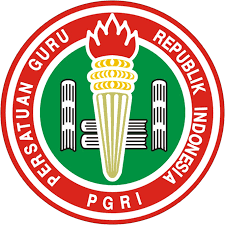Identity of the East End City Identity of the East End City of Java Island: Endhog-Endhogan Tradition in Banyuwangi in Commeration of the Birthdayof Prophet Muhammad SAW
DOI:
https://doi.org/10.36526/santhet.v6i1.1891Keywords:
City Identity, Endhog-Endhogan Tradition, Banyuwangi City.Abstract
This study presents a study of city identity in the aspect of non-physical objects (religious social activities) in Banyuwangi, namely the endhog-endhogan tradition on the commemoration of the birthday of the Prophet Muhammad SAW. A tradition that is one of the (positive) identities of the City of Banyuwangi pioneered by KH Abdullah Faqih, the founder of the Cemoro Islamic Boarding School, Songgon. The endhog-endhogan tradition is a form of visualization of the birth of the Prophet Muhammad SAW, before the birth of the Prophet Muhammad SAW the Arabian peninsula was hit by famine, but after the Prophet Muhammad SAW was born flowering and fruiting plants. This research is written using historical research methods, the data obtained from the Pegon Community, a historical community in Banyuwangi, interviews with the family of KH. Abdullah Faqih Cemoro, and supporting literature in the form of scientific writings. In this paper, the profile and intellectual genealogy of KH. Abdullah Faqih Cemoro, the historicity and philosophy of the endhog-endhogan tradition, and how the endhog-endhogan tradition has become an identity for the people and the city of Banyuwangi. All of them are presented considering that the identity or image of the city is strongly related to the historical aspects that are "captured" and implemented by the city community.
Keywords: City Identity, Endhog-Endhogan Tradition, Banyuwangi City.
References
https://banyuwangikab.go.id/berita-daerah/peringati-maulid-nabi-muhammad-saw-pemkab-gelar-festival-ngarak-endhog-dan-ancak
https://amp.timesindonesia.co.id/read/news/238596/endogendogan-tradisi-maulid-nabi-di-banyuwangi
https://www.google.com/amp/s/amp.kompas.com/travel/read/2018/11/21/075100927/ribuan-telur-diarak-pada-festival-endhog-endhogan-di-banyuwangi
Ahmadi, Dadi. Interaksi Simbolik: Suatu Pengantar, Jurnal MEDIATOR Vol.9 No.2 Desember 2008.
Mutowif, Ali. Internalisasi Nilai Islam Dengan Budaya Lokal: Studi Tradisi Endhog-Endhogan Di Suku Osing Kabupaten Banyuwangi, Malang: Penerbit Mazda, 2019.
Amar. Identitas Kota, Fenomena dan Permasalahannya, Jurnal “Ruang” Vol.1 No.1 September 2009, Jurnal Arsitektur Fakultas Teknik Universitas Tadulako.
Indarti, Wiwin. Masa Lalu Masa Kini Banyuwangi: Identitas Kota Dalam Geliat Hibriditas Dan Komodifikasi Budaya Di Perbatasan Timur Jawa, Artikel Dipresentasikan dalam International Conference “Indonesia: Art and Urban Culture 2016”, Fakultas Ilmu Budaya, Universitas Sebelas Maret, Solo.
Margana, Sri. Akar Demografis Pluralisme di Ujung Timur Jawa: Catatan Awal tentang Perkembangan Penduduk Banyuwangi pada Abad ke-19, makalah tidak diterbitkan, 2018.
Tim Peneliti PCNU Banyuwangi, Sejarah Nahdlatul Ulama Banyuwangi, Yogyakarta: LKiS, 2016.
Notonegoro, Ayung. Kronik Ulama Banyuwangi: Serpihan Kisah Pengabdian dan Perjuangan Ulama Banyuwangi Abad 15 hingga 20. Banyuwangi: Komunitas Pegon, 2018.
Notonegoro, Ayung. Islam Blambangan: Kisah, Tradisi, dan Literasi. Banyuwangi: Komunitas Pegon, 2020.
Sunyoto, Agus. Atlas Wali Songo, Tangerang: Pustaka Iiman, 2016.
Cathetan R. Sudira: Dialek Banyuwangi, 1926, Perpustakaan Universitas Indonesia.
Kitab Maulid Al-Berzanji karya Syekh Ja’far al-Berzanji al-Madani.
Majalah Sin Po edisi Saptoe 10 Mei 1941 tahun ke XIX No. 945 “Pesta Moeloedan di Banjoewangi”.
Yayasan KH. Abdullah Faqih Cemoro, Biografi KH. Abdullah Faqih Cemoro, stensil.
Wawancara Gus Fahd Reza Cucu KH. Abdullah Faqih, 17 Juli 2021 di Yayasan Abdullah Faqih, Cemoro, Songgon.





























